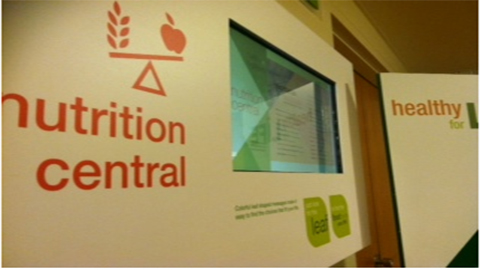Samantha Kaufmann (Whetstone contributor)
Finding a healthy meal on campus can be difficult if you aren’t looking in the right places.There are healthy choices in the cafeteria, but students often pass them up for what they consider a tastier alternative.
“Finding a healthy meal isn’t too hard,†said freshman Aquil Freeman. “It is getting one that tastes good that’s hard.â€
A serving size of any meal is of key importance, said kinesiology Professor Susan Kopp.
“If you are looking to have pasta for dinner from the cafeteria, take into consideration how much pasta is being put on your plate and eat accordingly,†she said. “Steer clear of condiments, such as mayonnaise and table salt.â€
Many students maintain a healthy diet over the summer but when they come back to school that ends, said sophomore Ashley Murray-McNicholas.
“Over the summer, I was doing so good not eating fast food and hitting the gym every day,†she said. “But when I got back to school, I was back into the same bad routine.â€
Freeman said the cafeteria doesn’t offer enough variety.
“The cafeteria has a wide selection of fruit but lacks a selection in vegetables,†he said.
To maintain a balanced diet, a person should eat five to seven serving of fruits and vegetables each day, Kopp said.
A recent study said that the motivation to eat healthy comes from many factors, including psychosocial environmental reasons to a lack of physical activity. Some reasons it may be difficult for college students to stay on a healthy diet include self-control, alcohol, convenience, cost, and lack of time.
The study, published in the Journal of American College Health and authored by Lara J. LaCaille and others, took a handful of college students, combined them into focus groups and analyzed their answers.
The cafeteria provides nutrition facts by nearly all the food. It also supplies pamphlets (next to the pizza) that recommend healthy eating habits.




